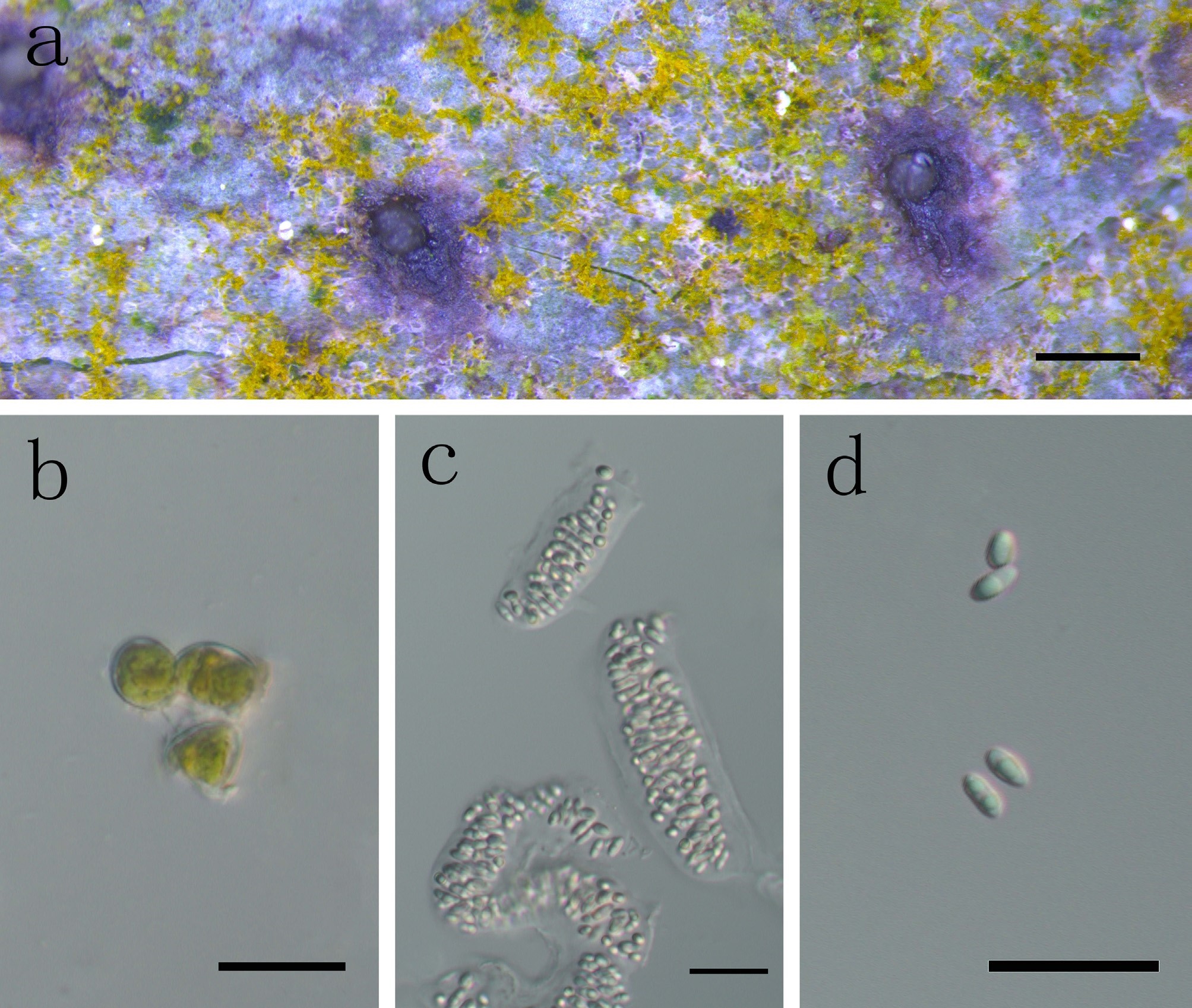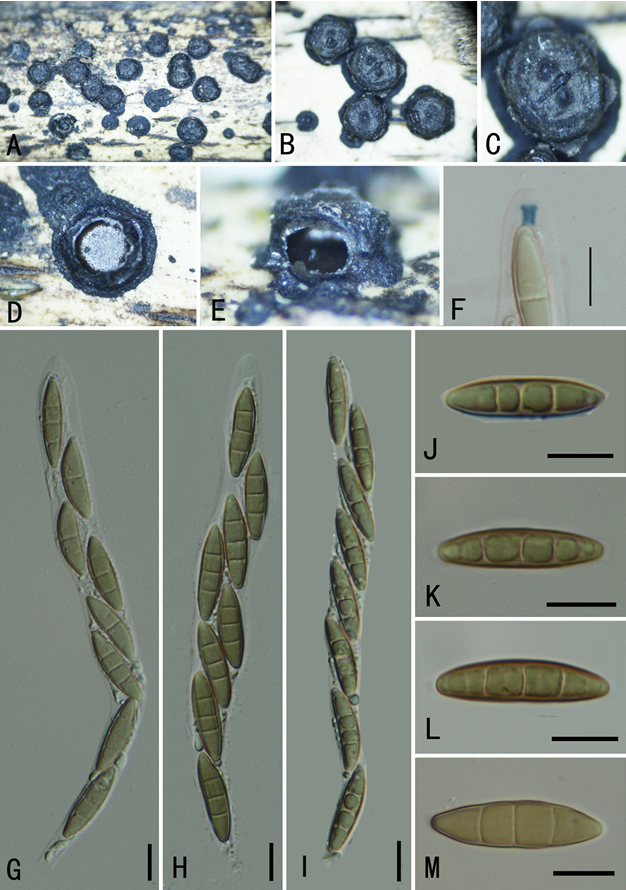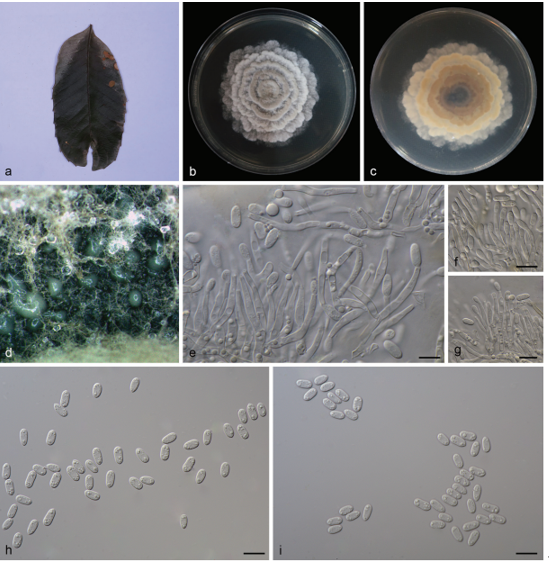Anisomeridium guangxiensis S.H. Jiang & C. Zhang, sp. nov. 2020
MycoBank MB 833707
Holotype: CHINA. Guangxi: Shangsi county, Shiwandashan National Nature Reserve, 21°54′14′′ N, 107°54′11′′ E, 290 m elev., on bark, 21 March 2019, S.H. Jiang & C. Zhang 20190702 (Holotype, HMAS–L 0143786)
Morphological description
Thallus crustose, corticolous, smooth and 10–20 μm thick, pale yellowish green, lacking prominent cortex and prothallus. Photobiont trentepohlia, broadly elliptical to ovoid, 11–14 × 7–10 μm, forming irregular plates. Perithecia not observed. Pycnidia superficial, conical, 0.06–0.1 mm diam., black. Conidia extruded in pale yellow, translucent drops that remain on top of the pycnidia, ellipsoid, non-septate, 5‒7 × 2–4 μm.
Habitat: On bark of trees.
Distribution: the type locality.
GenBank Accession:
Notes: the new species Anisomeridium guangxiensis is characterized by being corticolous, and having ellipsoid, non-septate conidia of 5‒7 × 2–4 μm extruded in pale yellow, translucent drops that remain on top of the conical pycnidia. It is closely similar to A. guttuliferum Lücking (2008: 207), but the latter can be distinguished by the foliicolous growth, larger pycnidia (0.2–0.3 mm diam.), and smaller conidia (4–6 × 2‒3 μm) (Lücking 2008). For conidia, A. prolongatum Lücking and A. disjunctum P.M. McCarthy & Kantvilas also resemble the new species. However, A. prolongatum is foliicolous, and the pycnidia (0.1‒0.2 mm diam.) have very long beaks (Lücking 2008); A. disjunctum differs by a UV+ thallus, the presence of ascomata, and circular to elliptic macropycnidia (McCarthy & Kantvilas 2018). Considering these differences, we described A. guangxiensis as new species.
Reference: CHAO ZHANG1,2,4, ANdrÉ APtrOOt3,5, HUA-JIE LIU2,6* et al.
the new species Anisomeridium guangxiensis (holotype, HMAS–L 0143786). a. thallus with pycnidia; b. photobiont; c and d. Conidia. Scale bars: a=300 µm; b, c, d=20 µm.









